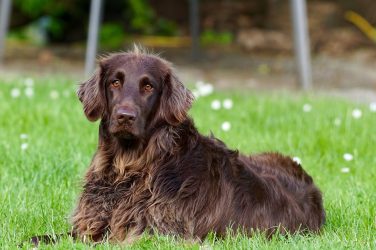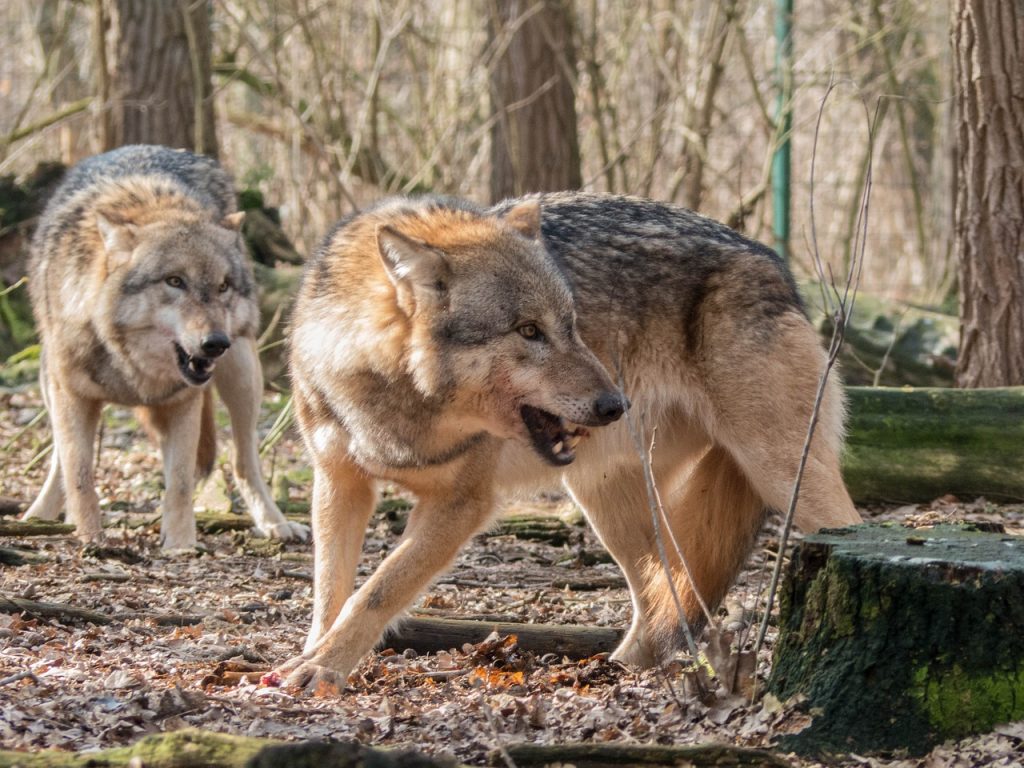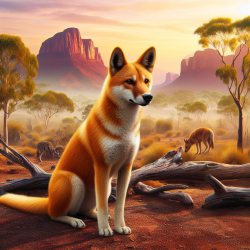Some researchers think Stone Age people domesticated the dog by adopting wolf pups and breeding the friendliest or the most obedient animals, once they grew up. But more recent thinking says natural selection created the dog.

Scientists debate whether dogs belong to the wolf species, Canis lupus, or deserve their own, Canis familiaris.
Caveman wolf-breeders?
Dogs domestication began 20,000 to 25,000 years ago, possibly in Siberia. But how? The traditional wolf-breeding theory has some problems. It’s easy enough to imagine Stone Age foragers capturing and raising a wolf pup, but the next stage isn’t so easy. Wolves are not dogs. They’re less predictable, more fearful, less friendly, and far more dangerous once they grow past that cute puppy stage. Removing those traits would’ve required many generations of controlled breeding. Our Stone Age wolf-managers would’ve had to choose the friendliest, most reliable animals in every generation and then breed them with other friendly, reliable wolves. At the same time, they would’ve had to make sure less desirable wolves never bred – or at least never bred into the community’s “domestic” wolf population. Modern breeders could do all that, but how could Stone Age foragers?
Keep in mind, no one back then had a metal chain, a cage, a kennel, or even significant buildings. Our ancestors lived as hunter-gatherers in camps that moved from place to place. So wolves living with people probably roamed free, staying near the camp by choice. How then could anyone control their breeding?
Aside form the logistical challenges, the job sounds downright life-threatening. Did you ever get between a food-aggressive dog and its dinner? Imagine it’s a full-grown wolf … and you’re blocking access to its desired mate.

You’re gonna tell us not to mate? Good luck with that.
On top of all that, our alleged wolf-breeders didn’t know about domestic animals, since none had ever existed. So they probably had no idea they could breed highly manageable creatures. It’s hard then to imagine Stone Age hunter-gatherers putting a lot of energy into a difficult, time-consuming, dangerous breeding project.
Natural selection against fear of humans
Newer thinking suggests natural selection created the dog.

The dingo is an Australian wild dog. For centuries, dingoes lived alongside Australian Aboriginal peoples, both hunting on their own and helping the humans – like prehistory’s camp wolves.
Imagine a handful of Stone Age wolves who follow a human band from camp-to-camp. They scavenge for leftovers, beg for food, and even help the hunters track and kill big game. Maybe these camp wolves descend from lone wolves who latched onto the band in search of food and friends (a human “pack” to replace a lost wolf pack). Or maybe they descend from pups adopted as pets. Either whay, they’re wild, and they choose their own mates.
Among these camp wolves, the animals least afraid of humans would eat the most. They’d get close to the kill most often and receive the most handouts. So these less fearful wolves would survive longer and give birth to more pups.
That’s natural selection – for low fear of humans. Modern theories of dog domestication suggest that genes connected to reduced fearfulness control several other traits, particularly traits common to puppies. So as generations went by – possibly across several centuries – the camp wolves began to retain puppy-like traits into adulthood. They evolved shorter noses, puppy-like playfulness, and friendly, submissive personalities. Genes connected to low fear also led to traits like curled tails, floppy ears, and patches of white fur. In other words, the camp wolves evolved into dogs … on their own, without human-controlled breeding.
That’s more than just speculation. We’ve actually witnessed a genetic connection between reduced fear and dog-like features, in another member of the Canidae (dog) family.
Russian foxes and dog domestication
In 1959, Russian scientists in Siberia began a multi-decade experiment with foxes. From a group of animals kept for fur, researchers bred the foxes least afraid of humans. After ten generations, the experiment had transformed a fifth of the foxes. They had shorter noses, curled tails, floppy ears, white patches, and puppy-like playfulness. And they’d become submissive tail-waggers who love, love, love human beings.
In other words, selection for low fear of humans created a new dog-like creature. You can even adopt one of these Russian foxes. They make great pets.1Fox/human friendships may date back to prehistory. Researchers have found fox and human fossils buried together at Stone Age sites in South America and Eurasia. In some cases, chemical analysis tells us the grave-mates ate the same diet, suggesting shared lives. (Wolves/dogs ultimately monopolized the market for canine companions, probably because they were more useful as big-game hunters.)
Domestic animals
Humans certainly do manage dog mating now and have for centuries, creating today’s many breeds. (There’s no way natural selection created the English bulldog, which can hardly breathe, or the Tibetan terrier, which has long hair blocking its eyes.) But most likely no one bred the dog in the first place. Rather, natural selection tuned them to their environment – in this case, the human environment.
Dog/wolf-domestication may not be unique. Researchers suspect natural selection created other domestic animals, like sheep and cats. Life alongside prehistoric people probably transformed those and other creatures from truly wild animals into something like the livestock and pets we know today, before anyone took control of their breeding.
© 2024 by David W. Tollen
Photo credits:
- Dog, wolves and dingo courtesy of Pixabay.com
- A Russian domesticated Red Fox with “Georgian White” fur color, by Kayfedewa, licensed under Creative Commons Attribution 3.0 Unported (CC BY 3.0)
For a great book on the subject, see Pierotti and Fogg, The First Domestication: How Wolves and Humans Coevolved, Yale University Press (November 28, 2017).
This post updates an earlier one, “Who thought up dog domestication, people or dogs?”
- 1Fox/human friendships may date back to prehistory. Researchers have found fox and human fossils buried together at Stone Age sites in South America and Eurasia. In some cases, chemical analysis tells us the grave-mates ate the same diet, suggesting shared lives. (Wolves/dogs ultimately monopolized the market for canine companions, probably because they were more useful as big-game hunters.)


0 Comments